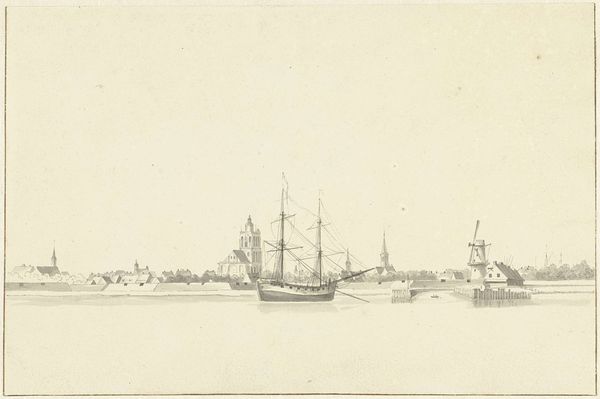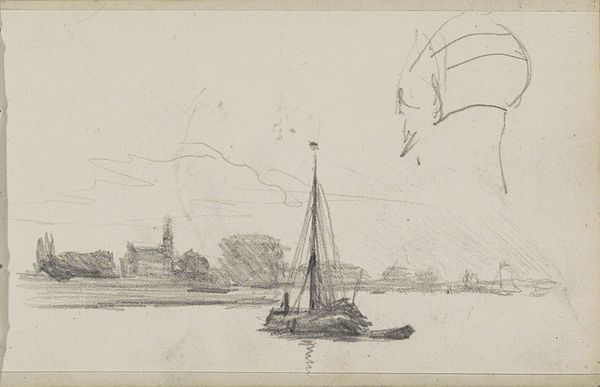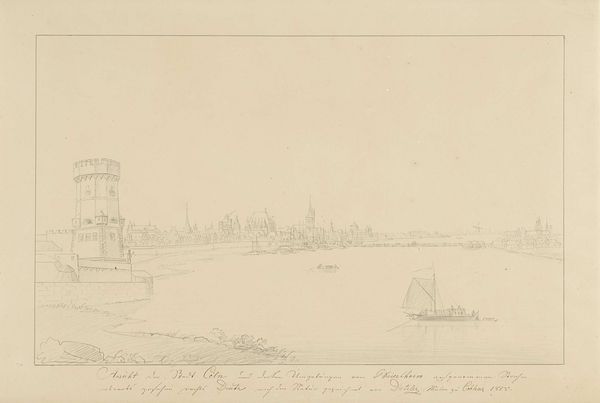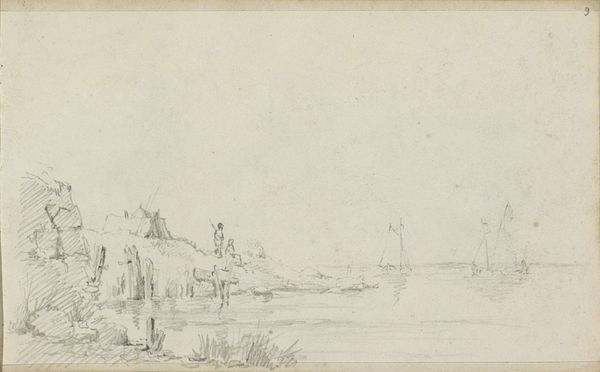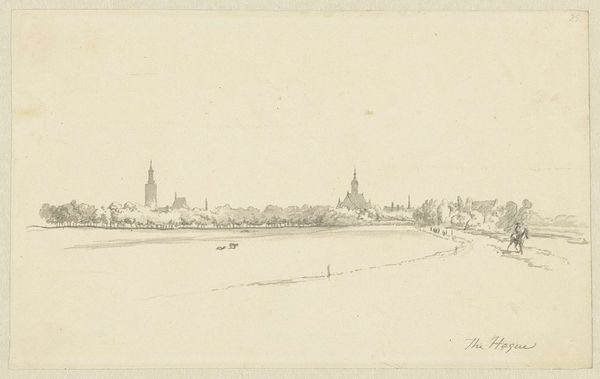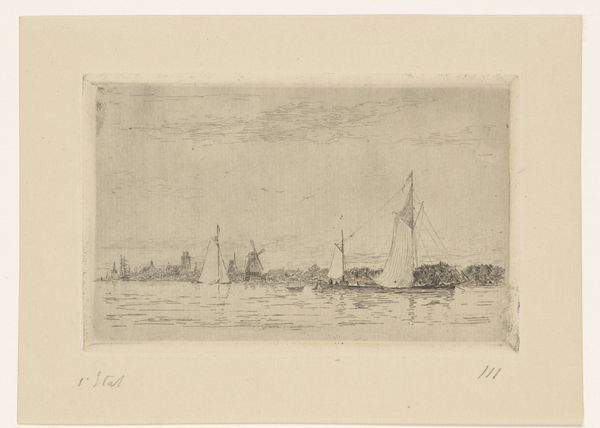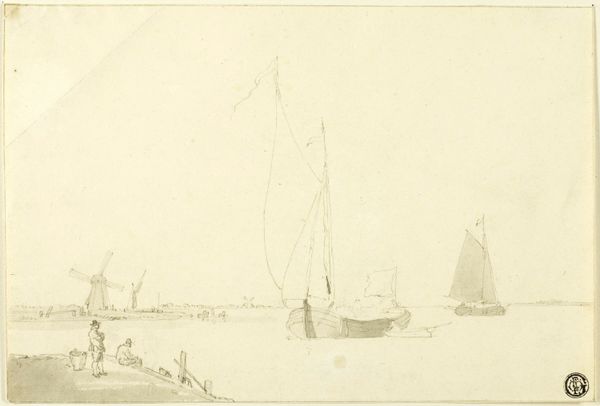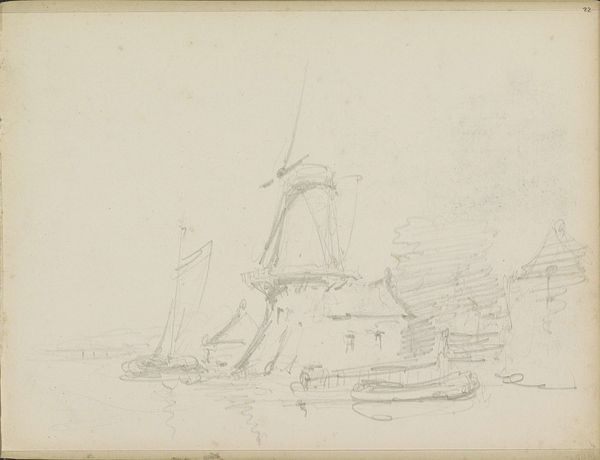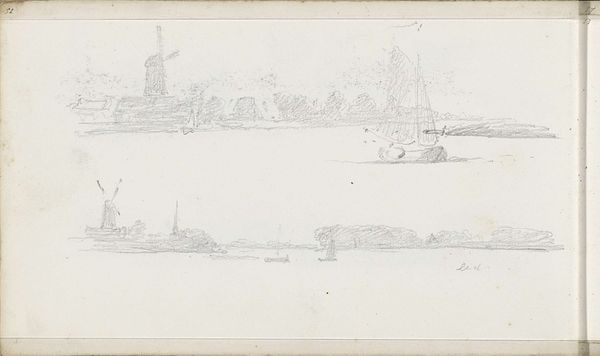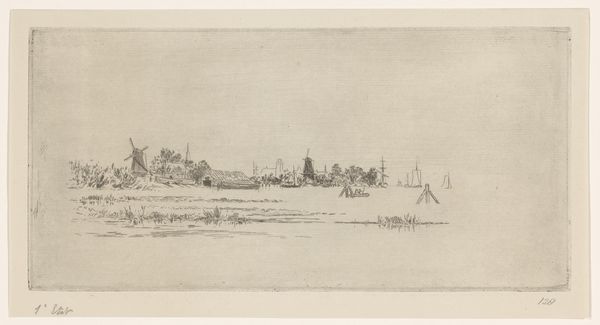
drawing, pencil
#
drawing
#
pencil sketch
#
landscape
#
etching
#
pencil
#
cityscape
#
realism
Copyright: Rijks Museum: Open Domain
Editor: So, this is "Gezicht op Enkhuizen," a pencil drawing by Petrus Johannes Schotel, made sometime between 1841 and 1865. It's incredibly subtle. The tones are so light, it almost fades into the paper. What do you see in this piece beyond just the image itself? Curator: This drawing speaks volumes about the materiality of artistic labor in 19th-century Holland. Schotel's choice of pencil, a relatively inexpensive and readily available material, suggests a democratizing shift in art production. Rather than focusing on the aesthetic beauty, I’m drawn to consider its availability in a society built on maritime trade and developing industrialization. How did access to materials like pencils affect artistic practice and the wider visual culture? Editor: That's a great point. I hadn't considered the economic accessibility of the materials. Does the precision of the line work suggest anything about the artist’s training or the market he might have been targeting? Curator: Absolutely. Think about the rising middle class at the time. Pencil sketches and drawings became increasingly popular as affordable artworks. Schotel may have been consciously positioning himself to cater to this emerging market. It begs the question: How did the economics of art supplies shape the art itself, influencing both its form and content? Were these pencil drawings ever used as studies for paintings and, in that way, function as commodities as well? Editor: So, by looking at something as simple as the drawing medium, we can uncover a lot about the artist's social and economic environment. It makes me rethink how I view "lesser" works of art. Curator: Precisely! By looking beyond subject matter and engaging with materials and methods, we get a much richer understanding of art's function within a specific time and place. Editor: I’ll never look at a simple pencil drawing the same way again! Curator: That’s the power of materialist art history: finding the big stories in the small details.
Comments
No comments
Be the first to comment and join the conversation on the ultimate creative platform.


